#Prince Skyline GT
Explore tagged Tumblr posts
Text

Not happy with the translation of this page but think i have it maybe 80 to 90% correct.
20th century NISSAN MOTORSPORTS
1958-2000
'60~
The infancy of domestic racing.
R381 and R382 win consecutive Japanese Grand Prix victories
The dawn of full-fledged motorsports in Japan
The origin of the visit dates back to the late 1950s, when a two-wheeled Asama Volcano race was held. As the 1960s entered, domestic motorcycle manufacturers began to win on the world GP stage, and Japanese industry became a reality on the world stage.
I proved it. The Suzuka Circuit was completed in the fall of 1962, and Japan's first full-scale automobile race, the 1st Japan Grand Prix, was held the following year in May 1963. Each automobile manufacturer, taking note of its promotional effects, soon formed a works team. Nissan selected powerful riders one after another, such as Kenjiro Tanaka, Kunimitsu Takahashi, Gen Kitano, Motoharu Kurosawa, Masahiro Hasemi, Kenji Tohira, Seiichi Suzuki, and Kazuyoshi Hoshino, and many of them went on to become main players in the domestic four-wheel racing world. It will reign for a long time.
Funabashi Circuit in 1965 and Fuji Speedway opens in 1966. Kanto and all over Japan
The racing fever is increasing. Just in time for Tokyo Motor Show.
The automobile industry was in a period of high growth before and after the pick-up.
It was a time when it made great strides as Japan's core industry.
Then, in 1966, Nissan and Prince merged, and Japan's first racing sports car “Prince R380”
will further evolve under Nissan.
In 1968, a large displacement engine with a unique huge wing was introduced.
The R381, with its powerful engine, and the R382 the following year defeated strong rivals to win the Japanese Grand Prix. And formula car races are held in Japan.
Fairlady/Skyline/Bluebird GT cars and Touring cars.
Many car races, as well as endurance races that included these races, were held.
Nissan also actively participated in overseas rallies.
At a time when the World Rally Championship did not yet exist,
Monte Carlo and Safari became the main battlegrounds.
The 1960s was the infancy of domestic racing.
It was a time of rapid evolution and growth. However, the issue of automobile exhaust gas became apparent in the 70s.
In early summer of 1969(?) , Nissan announced that it would be absent from the Japanese GP, and at that moment,
Domestic motor sports had only been growing until then.
The world was forced to seek a new direction.
2 notes
·
View notes
Text

#datsun#nissan#prince motor company#skyline gtx#skyline 2000#skylinegtr#skyline kenmeri#gt-r#c110#gc110#skyline 2000 gt-r#kpgc110#beach#Japan#jdmclassic#jdm cars#oldschool#import cars#nismo#classic car#vintage cars#70s
459 notes
·
View notes
Text

Skyline GT-B and GT-kai @ Okutama-ko
#carsonfilm#japan#film#35mm#classic cars#bessa#jdm#wangan#tokyo#Nissan#prince#Skyline#hakosuka#gt#gt-b#portra 160
74 notes
·
View notes
Photo
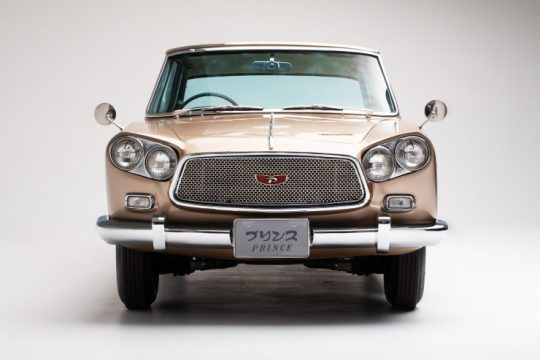
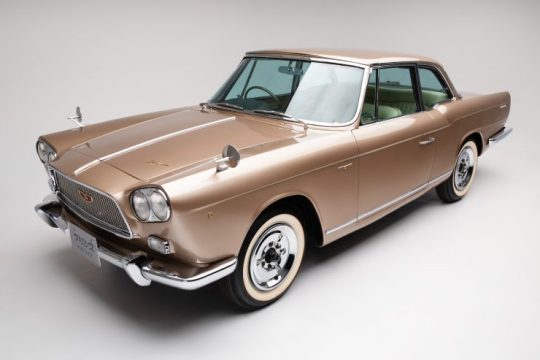
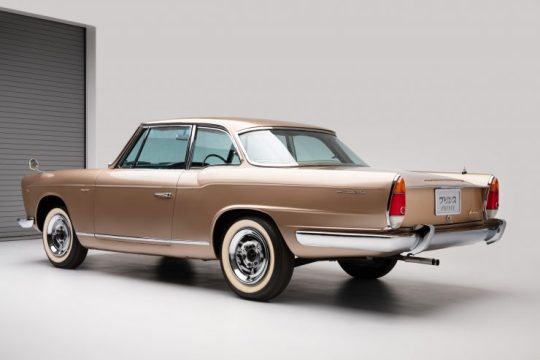




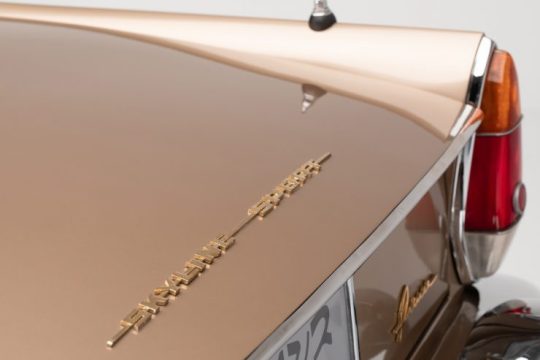
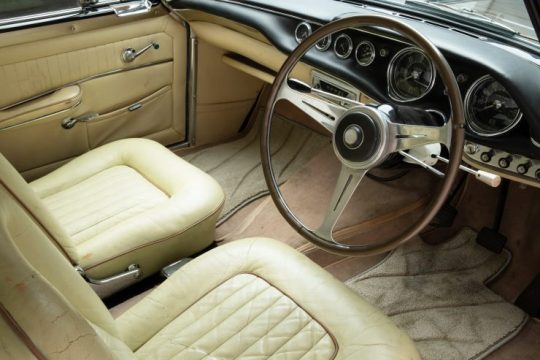

Prince Skyline Sport Coupe by Michelotti. (1 of 60).
The Prince Skyline was a car with humble beginnings that would slowly evolve into one of the most famous Japanese sports cars in the world – the Nissan Skyline and the almost universally loved Nissan GT-R.
The Skyline model range started in 1957 as a modest four-door sedan with a 1,482cc 4-cylinder engine producing 60 hp, and capable of a top speed of 87 mph. Nissan and Prince would merge in the 1960s, the Skyline was one of the Prince cars that survived – eventually becoming a major member of the Nissan stable.
One of the most famous early Skylines is the car you see here, the Skyline Sport Coupe by Michelotti. It was the work of Italian designer Giovanni Michelotti who was hired to pen the eye-catching bodywork, using the Prince Gloria as the base platform. The Gloria was the slightly larger sibling to the Skyline, with a 1.9 litre engine that offered a little more power, and a slightly larger overall footprint allowing more room inside the cabin. Michelotti used this larger platform to his advantage, creating both a luxurious coupe and a convertible, with ample interior space, canted headlights, and remarkably good visibility from inside the car thanks to the narrow pillars. The unusual headlights weren’t actually that unusual at the time, they’d been used by cars built by automakers like Chrysler, Bentley, and Ferrari. Michelotti would go on to use a somewhat similar headlights design again on the Triumph Vitesse in 1962.The early 1960s were a time of rapid change in the automotive world, with many car makers competing to create and establish new design language for the new decade. It was a forward-thinking move by Prince to hire Michelotti at the beginning of the decade to design them a new body, at the same time giving the brand the significant image boost that comes with the hiring of a well-known Italian designer.
Under the hood, the Prince Skyline Sport Coupe used the same 91 hp 1.9 litre engine as the Gloria, so performance was sedate rather than aggressive. The transmission is a 4-speed manual column-shift, and power is sent back to a live axle rear end. Over the course of the model’s very limited production run, only approximately 60 examples of Michelotti’s Skyline were built. Despite their relative rarity, they were a common sight in Toho films of the early 1960s – largely because Prince had a very proactive (and very successful) PR team who were adept at getting their cars used in films.
#Prince Skyline Sport Coupe#Nissan Skyline#Nissan GT-R#Giovanni Michelotti#Prince Gloria#chrysler#Bentley#Ferrari#Triumph Vitesse
96 notes
·
View notes
Photo
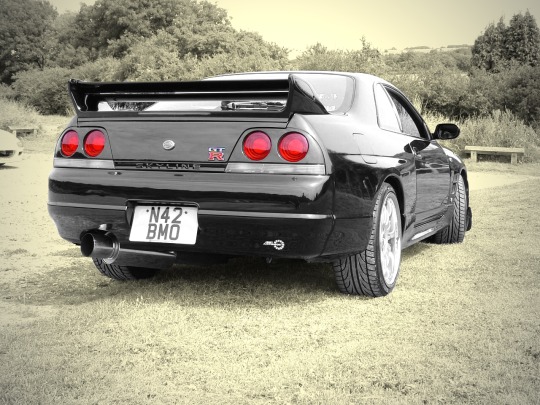
Back in a former life, I had an addiction that I loved beyond sanity. Here’s the story of it. 2002 2003 2004 2005 2006 2007 2008 2009 pt1 2009 pt2 2009 Redux
This is the final spec list for my glorious, insane Brutal Truth.
Nissan Skyline BCNR33 GT-R (Type 2) manufactured in April 1996. JDM non V-Spec vehicle retailed through Osaka Nissan Prince in May/June 1996. Imported to the UK in June 1997. Remained in original JDM spec without speedometer conversion until August 2002. Only the steering wheel & white dial sets were fitted in Japan.
Nismo RB26N1 bare engine: [N1 water pump (improved flow & less cavitation)/Reinforced cylinder block head bolt boss/Increased sump capacity (6L 20w60)/1.2mm oil restrictor]
N1 head with 0.5mm overbore (2598cc)
Cryogenically hardened N1 crankshaft
Wossner forged & cryogenically hardened pistons
Abbey Motorsport reinforced & cryogenically hardened con-rods
ACL Race Series conrod & crankshaft bearings
Tomei sump baffle kit
Tomei high flow (larger drive gears) oil pump
HKS 1.2mm metal head gasket
Tomei Procam Spec 2 cam kit (270 degree inlet & outlet with 10.25mm lift)
HKS V-Cam System Step 1 Type B (variable 248-278 degree inlet; replaces Procam inlet camshaft)
HKS vernier cam pulleys
HKS kevlar reinforced timing belt
Trust metal intake & throttle gaskets
HKS front pipe & decat gaskets
GReddy Iridium 08 Racing sparkplugs
Mocal 19-row oil cooler & Abbey Motorsport remote oil filter assembly
Abbey Motorsport catch tank & washer reservoir with SFS breather hoses
Abbey Motorsport Pro Alloy large radiator
Tomei fuel pump, fuel regulator & 600cc injectors
A’PEXi Power Intake induction kit
A’PEXi GT Spec intercooler (237x610x136mm) & hard pipe kit
HKS GT-SS turbos
HKS twin AFM delete kit
Tomei turbo elbows
HKS downpipes
HKS Silent Hi-Power exhaust
Abbey Motorsport 80mm decat pipe
Mine’s VX-ROM
HKS F-Con V Pro
HKS EVC 6 boost controller (1.6 bar)
AEM wideband lambda sensor
Splitfire DI Super Direct Ignition System
HKS Circle Earth kit
HKS GD Max twin-plate clutch (with lightened flywheel)
Abbey Motorsport rebuilt transfer box
Abbey Motorsport rebuilt gearbox with cryogenically hardened gear set, modified Nissan synchromesh upgrade and OS Giken strengthening plate
Abbey Motorsport rebuilt rear diff
Nismo gearbox mounts
Nismo Solid Shift gear stick (10% short shift)
Omex Shift Light Sequential
Sunsei SE-135 solar panel trickle charger mounted on a custom aluminium riser between the rear parcel shelf speaker enclosures.
Team Dynamics Equinox alloys 19x9.5, ET+15 in silver with polished stainless steel rim.
Falken FK452 265/30/19 Y-rated tyres
Cusco brake master cylinder brace
Cusco rear steering delete kit
Cusco front & rear upper suspension links
AST Sport Line 1 full suspension kit with UK spring setup
Nismo stainless steel braided brake hoses
StopTech 355mm rotor 4 pot caliper front brake kit
StopTech 355mm rotor 2 pot caliper rear brake kit with Abbey Motorsport modified pad retainers
Ferodo DS2500 brake pads front & rear
Bomex AD-390 front splitter
Nismo R34 smoked front indicators in custom aluminium mounting plates finished in crackle black
Nissan Xenon headlamp units
Border Racing Aero Fenders (vented front wings) with silver GT emblems from a R32 Skyline
Nismo smoked side repeaters
Top Mix one-off FRP twin blade rear spoiler on custom aluminium mounting plates
Entire exterior resprayed in BMW black (code 086) base and lacquer
Nissan Motorsport International carbon fibre B-pillar plates
PIAA carbon effect silicon wipers, front pair with spoilers, rear without
Nismo white face dial sets (dashboard & centre console) in carbon fibre panels
AEM AFR gauge mount replaces the lighter socket
HKS EVC display mounted on custom carbon fibre plate replacing the ashtray
Lighter socket relocated to the fog light switch panel
Nissan Momo steering wheel (with airbag)
Dressycar Nismo harness pads
Redline Automotive leather gearstick & handbrake gaiters
Abbey Motorsport carbon fibre door sill trims
Carbon fibre boot sill trim
Inlet plenum and sundry induction pipework finished in powder grey
Trust clear cam pulley cover
HKS Kansai Service carbon fibre spark plug cover
Right hand cam cover finished in crackle black
Nismo radiator & washer reservoir caps
HKS Kansai Service front strut brace finished in high gloss black
GReddy aluminium slam panel finished in crackle black
Tein bonnet dampers with black sleeves
Custom made one-off Cobra Misano Lux front seats: [Alcantara (colour code 9189) outers/Alcantara (colour code 9182) centre panels/One-piece carbon fibre backs/Sidewinder bases on custom subframes adapted by Abbey Motorsport/Cobra logo in silver thread on the headpads/GT-R logo beneath the grommets on seat backs]
JVC KD-AVX2 multi-media DVD/CD receiver with built-in 3.5” widescreen monitor
2x JL Audio Evolution VR600-CXi 6” speakers (front)
2x JL Audio Evolution TR650-CXi 6.5” speakers (rear)
Multiple and interlaced Thatcham rated security systems.
500 bhp. 520 ft/lb.
Ludicrously, hilariously, unbelievably fast.
Hope you enjoyed this little trip down memory lane with me. Cheers! JM.
(Photo by N. Liassides.)
#r33#bcnr33#skyline#gt-r#nissan skyline#Abbey Motorsport#HKS#Bomex#Tomei#A'PEXi#GReddy#Nismo#RB26N1#Mocal#Team Dynamics
12 notes
·
View notes
Photo
Pretty sure the first one is actually the earlier Prince Skyline GT


280K notes
·
View notes
Text
Nissan Gtr
Introduction of a massive machine.
Nissan Gtr is one of the most popular production cars manufactured by Nissan. Between 1969 and 1974 and again between 1989 and 2002, Nissan introduced a high performance coupe version which created a massive impact on both roads and motorsport called skyline GTR. The GTR C10 was the first gtr to wear that legendary badge which opened the gate for a tremendous era in motorsport. The car was just brutally powerful and insanely attractive at that era ie. 1969 to 1974. Several car manufacturing companies faced tight competition at that time due to this C10. Manufacturers felt ultimate pressure in beating the GTR C10 especially in the design and 2 liter 160 bhp engine which was a brutal engine configuration at that time. Around 3,10,447 units of C10 were produced at that time. That was the birth of the supercar killer or Godzilla.
The most precious and important feature of the Gtr C10 was its engine unit which is 2.0 liter, DOHC, triple Mikuni-Solex Side-Draught, inline 6. During 1973, car manufacturers faced an oil crisis, that was the introduction of the second generation GTR which is GTR C110.
The Nissan GTR C110: A Look Back at the "Kenmeri" GT-R
The Nissan GT-R C110, commonly known as the "Kenmeri" GT-R, represents a noteworthy chapter in Nissan's GT-R series. Produced from 1971 to 1972, it followed the legendary C10 Skyline GT-R, marking the second generation of this esteemed lineup.
Design and Styling
The C110 GT-R was named after the "Kenmeri" family, featured in Nissan's marketing campaign for the car. This model had a more refined and slightly larger design compared to its predecessor, the C10. It boasted a more modern and aerodynamic shape, reflecting the styling trends of its time.
Engine and Performance
Under the hood, the C110 GT-R was equipped with the same 2.0-liter inline-six engine (S20) found in the C10. The S20 engine, derived from the Prince R8C used in the Prince R8 sports car, delivered robust performance, generating around 160 horsepower. This was a notable figure for its era, ensuring the GT-R's reputation for speed and agility.
Performance Features
The C110 GT-R was designed with performance in mind. It came with a sportier suspension and a manual transmission, enhancing its driving dynamics. These features contributed to its high-performance credentials and continued the GT-R tradition of exceptional handling and speed.
Limited Production
The production of the C110 GT-R was quite limited, with only about 197 units made. This rarity, combined with the model's brief production period, has made it a coveted collector's item today.
Legacy and Impact
Produced during a transitional phase for Nissan, the C110 GT-R was a successful model that contributed to the GT-R legacy. Although it was eventually succeeded by the more renowned R32 GT-R in the late 1980s, the C110's role in establishing the GT-R’s performance credentials is still recognized. It remains a classic vehicle cherished by enthusiasts and collectors for its historical significance and contribution to the GT-R lineage.
Nissan GT-R R32 and R33:
The Nissan GT-R R32 and R33 are important milestones in the history of Nissan’s high-performance cars. Each model brought unique features and improvements to the GT-R lineup. Here’s an overview of what made them stand out:
Nissan GT-R R32 (1989-1994)
Design : The R32 GT-R, often called "Godzilla," had a strikingly aggressive design. It featured a low, wide stance with aerodynamic enhancements that set it apart from previous models.
Engine and Power : This model was equipped with the RB26DETT engine, a 2.6-liter inline-six twin-turbo engine delivering approximately 280 horsepower. Known for its durability and performance, it set new standards in the automotive world.
Technology : The R32 introduced advanced technologies like the ATTESA E-TS all-wheel-drive system and the Super-HICAS (High Capacity Actively Steering) system. These innovations offered excellent handling and stability, particularly on challenging surfaces.
Motorsport Success : The R32 made a significant mark in racing, especially in Group A series, where it dominated and earned the nickname "Godzilla" for its formidable presence on the track.
Nissan GT-R R33 (1995-1998)
Design : The R33 GT-R featured a more refined and slightly larger design compared to the R32. It improved aerodynamics and offered a more comfortable ride, making it suitable for daily driving while still being sporty.
Engine and Power : It continued with the RB26DETT engine, similar to the R32. However, the R33 focused on enhancing the driving experience with better handling and a well-balanced performance due to its larger chassis and upgraded suspension.
Technology : The R33 GT-R built on the R32’s tech with advancements in the ATTESA E-TS all-wheel-drive system and introduced an active LSD (Limited Slip Differential). These upgrades provided enhanced traction and stability.
Daily Use : Designed with more practicality in mind, the R33 GT-R offered improved comfort and usability for everyday driving, balancing high performance with everyday convenience.
Overall Impact
Both the R32 and R33 GT-R models significantly shaped Nissan’s performance car reputation. The R32 is renowned for its groundbreaking performance and racing victories, while the R33 is noted for its improved driving experience and practicality. Collectors and enthusiasts continue to value these models for their contributions to Nissan’s legacy in high-performance sports cars.
Nissan GT-R R34: A Legend of the 2000s
The Nissan GT-R R34, built from 1999 to 2002, stands out as a highly esteemed model in the GT-R series. Known for its impressive performance, advanced technology, and significant cultural footprint, the R34 upheld and expanded upon the legacy of its predecessors.
Design and Aesthetics
The R34 GT-R showcased a striking and aggressive design that evolved from the R33. It featured a streamlined, aerodynamic profile with a prominent rear wing and distinctive quad circular taillights. These design elements not only gave the car a modern and sporty look but also enhanced its high-speed stability and handling.
Engine and Performance
The R34 was powered by the renowned RB26DETT engine, a 2.6-liter inline-six with twin turbochargers, generating approximately 280 horsepower. This output adhered to Japan's power limit regulations but was known for its exceptional tuning potential. Car enthusiasts frequently upgraded the engine for even greater performance. The R34's engine was praised for its reliability and responsiveness, setting a high standard in the sports car segment.
Technological Features
The R34 GT-R came equipped with advanced technologies. It featured an enhanced version of the ATTESA E-TS all-wheel-drive system, which provided outstanding traction and handling. The car also incorporated the latest Super-HICAS (High Capacity Actively Steering) system, enhancing maneuverability and driving stability. A notable feature was the multi-function display on the dashboard, which provided real-time data on various performance metrics, a cutting-edge innovation at the time.
Cultural Impact
The GT-R R34 achieved iconic status through its appearances in popular culture, including video games and movies. Its role in the "Fast and Furious" film series and its presence in video games like "Gran Turismo" helped solidify its legendary status among automotive enthusiasts around the world.
Enduring Legacy
Even years after its production ended, the R34 GT-R remains a highly sought-after model for collectors. Its combination of advanced technology, impressive performance, and cultural significance continues to be celebrated, ensuring its place as a revered icon in automotive history.
Nissan GT-R R35: The Pinnacle of Modern Performance
Introduced in 2007, the Nissan GT-R R35 represents a major leap in the evolution of the GT-R series. Known simply as the “GT-R” or “R35,” this model has made a substantial impact in the realm of high-performance sports cars, blending cutting-edge technology with contemporary design.
Exterior Design and Aesthetics
The R35 GT-R boasts a strikingly bold and aggressive exterior, characterized by its streamlined shape that enhances both visual appeal and functionality. The vehicle’s sharp contours, broad stance, and distinctive front grille create a commanding road presence. Its aerodynamic design includes practical features like a rear diffuser and front splitter, which contribute to better stability at high speeds and efficient cooling.
Powertrain and Performance
The R35 is powered by the VR38DETT engine, a 3.8-liter V6 twin-turbocharged unit. Initially delivering about 480 horsepower, this engine has seen upgrades over the years, with newer versions pushing power outputs up to 600 horsepower. Renowned for its responsiveness and robust performance, the VR38DETT engine has set new standards in the sports car category.
Advanced Technology
The GT-R R35 integrates sophisticated technology to enhance driving dynamics. It features the ATTESA E-TS Pro all-wheel-drive system, which ensures superior traction and handling. The vehicle also includes the latest Super-HICAS (High Capacity Actively Steering) system, improving both maneuverability and stability. Additionally, the dashboard’s multifunction display provides real-time information on various performance metrics and vehicle functions.
Driving Dynamics
The R35 GT-R is acclaimed for its exceptional handling and driving experience. Its advanced suspension system, paired with modern driver aids, offers a harmonious blend of comfort and performance. The car’s rapid acceleration and precise cornering have established it as one of the top-performing sports cars of its era.
Enduring Influence
Since its debut, the R35 GT-R has become a symbol of performance and innovation. It continues to be a benchmark in the sports car industry, celebrated for its advanced technology, impressive power, and iconic status. Its legacy endures as a significant milestone in automotive history.
0 notes
Photo

#fameone#nissan#datsun#prince motor company#skyline#gt-r#kpgc10#hakosuka#daikoku futo#tsurumi ward#yokohama#kanagawa#japan#photography#photographers on tumblr
256 notes
·
View notes
Text
Die-cast: Autoart 1973 Nissan Skyline GT-R
Die-cast: Autoart 1973 Nissan Skyline GT-R
Skyline 2000 GT-R (KPGC110) a rare, racy hatchback … Just as the oil crisis was putting the kibosh on performance cars in the U.S. in 1973 it also was squishing a newly revised Nissan offering in Japan. The cool Nissan Skyline 2000 GT-R, the second generation GT-R, was a performance oriented fastback that for all its styling looked like a surefire winner in both Japan and the U.S. market where��
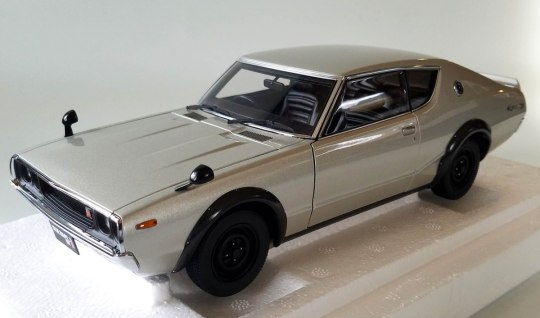
View On WordPress
#(KPGC110)#1973 Nissan Skyline 2000 GT-R#autoart#Bridgestone radials#Datsun#featured#hatchback#Kenmeri Skyline#Prince Motor Co.#Toyota Celica
1 note
·
View note
Text
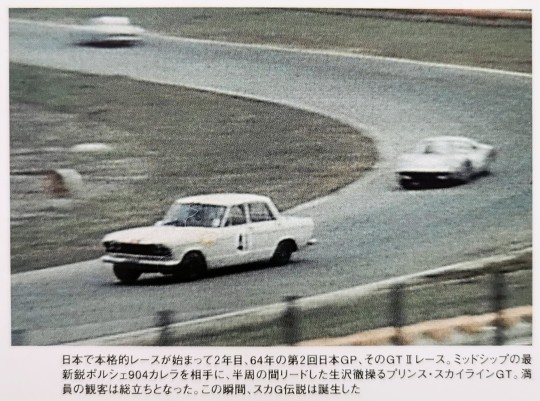
The 2nd Japan GP in 1964, the second year since full-scale racing began in Japan, was the GT II race. The Prince Skyline GT, driven by Toru Ikuzawa, led for half a lap against the latest mid-engined Porsche 904 Carrera.
The entire audience was on their feet. At this moment, the Skyline legend was born.
0 notes
Text
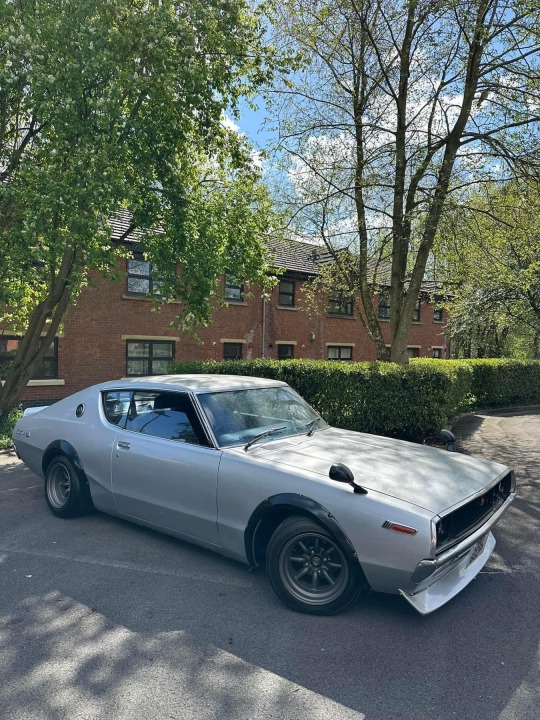
#nissan#datsun#prince motor company#nismo#nismoracing#skyline gtr#Ken Mary#gt-x#oldschool#vintage cars#classic car#jdm cars#racing#japan#import cars#exotic#tunercars
227 notes
·
View notes
Text

Skyline GT-B @ Sodegaura
#carsonfilm#japan#film#classic cars#bessa#jdm#wangan#tbcc#gt-b#gt-r#skyline#prince#nissan#portra 160#kodak#kyusha
52 notes
·
View notes
Photo


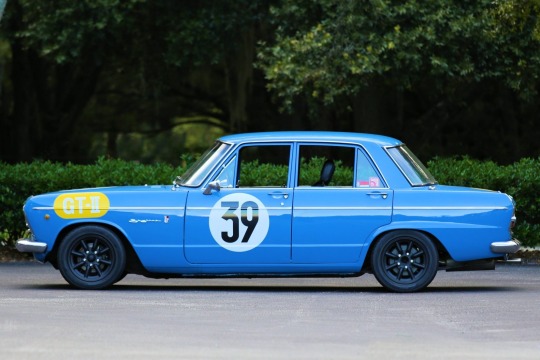

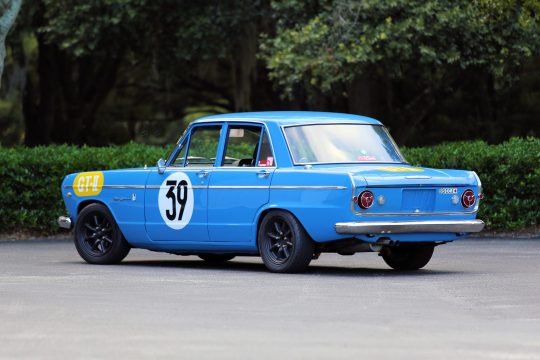
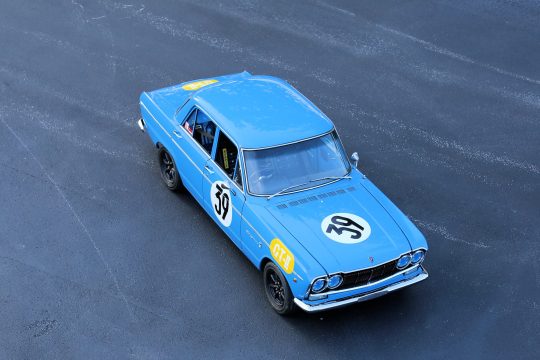
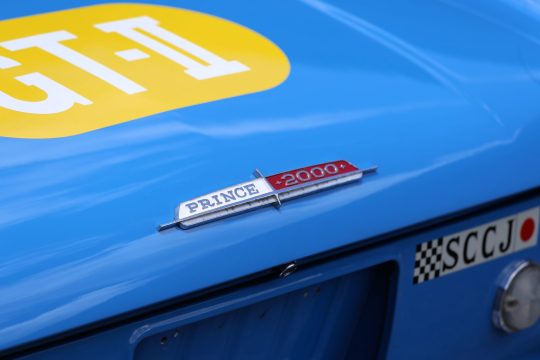
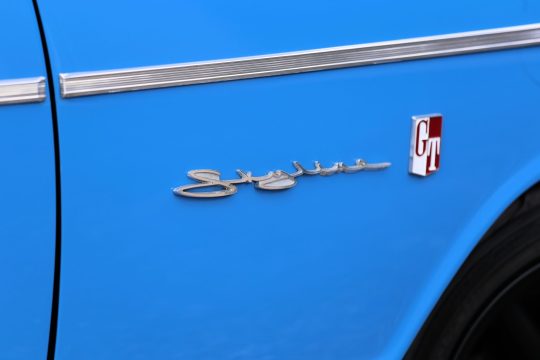

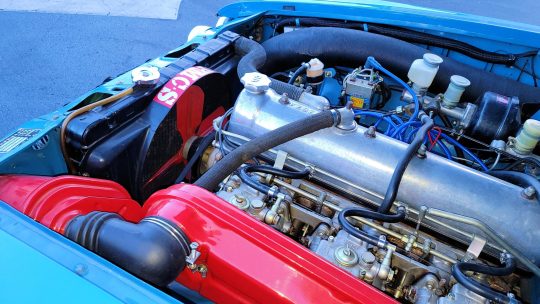
Prince Skyline 2000 GT-B
This 1967 Prince Skyline 2000GT-B has been modified as a backdated tribute of the #39 car campaigned by Yoshikazu Sunako in the 1964 Japan Grand Prix. Power is from a 2.0-liter G7 inline-six equipped with triple Weber carburetors and paired with a five-speed manual transmission. Additional features include front disc brakes, black vinyl Kameari GT bucket seats with Sabelt harnesses, bullet-style side mirrors, a push-button AM radio, Checkman steering wheel, Bilstein shocks, and black-painted RS Watanabe wheels. The right-hand drive cabin has been stripped of its carpets, door panels, and rear seats. Fixed-back bucket front seats are equipped with metal ventilation grommets and Sabelt harnesses. Custom metal floor plates have been installed, and a push-button AM radio and Jeco analog clock are mounted in the dash.
48 notes
·
View notes
Photo
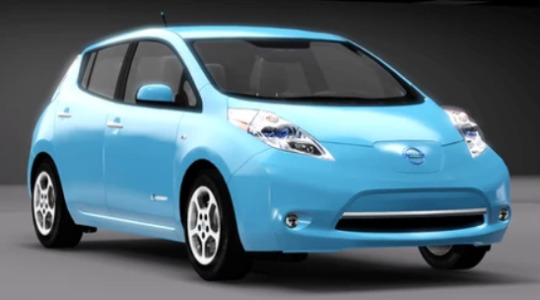
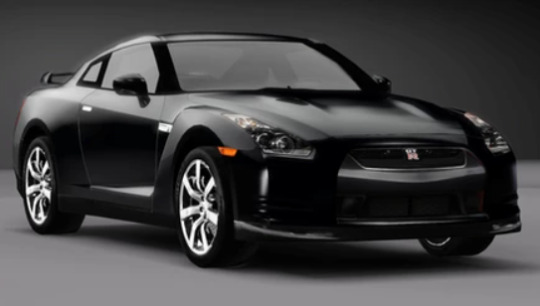
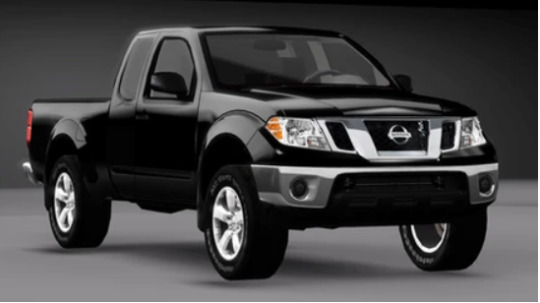
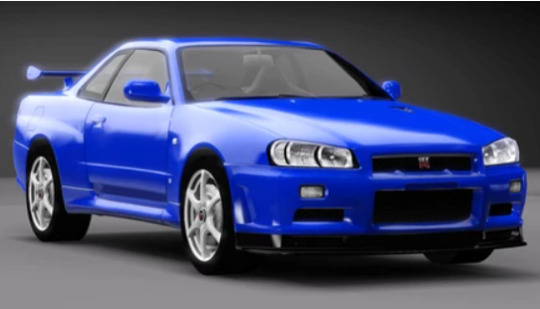
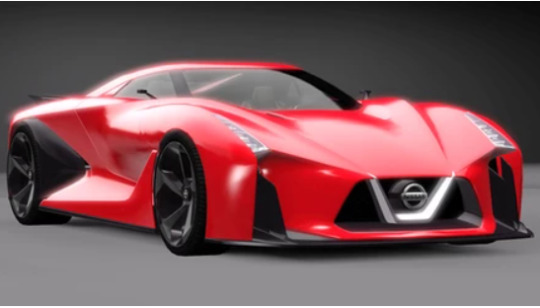

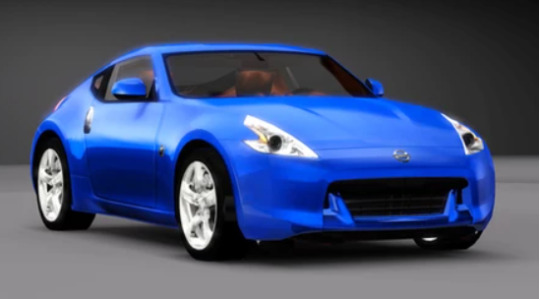
VEHICLE (NISSAN) - Fresh Prince Creations
🚗 🚗 🚗
2011 Nissan Leaf
2009 Nissan GT-R
2010 Nissan Frontier
2002 Nissan Skyline GT-R V-Spec II
Nissan 2020 Vision Gran Turismo
2017 Nissan GT-R
2009 Nissan 370Z
🚗 🚗
Cars by FreshPrinceCreations
direct link here: freshprincecreations.com
99 notes
·
View notes
Photo


Skyline GT-R
1 note
·
View note
